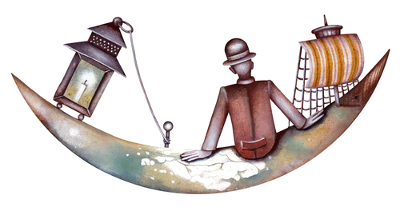When we talk about the narrative text, we know that it is a story that has already happened, which may be true or the result of a certain author's imagination, called fiction. We also know that for it to have meaning, some elements participate in its constitution, such as: the characters, the place where they occur the facts, the time in which they happen, the narrator, who is the person who tells us everything, and the story itself, also called plot.
Well, now let's understand a little more about the way in which the narrator chooses to tell us everything that happened, that is, what speech he will use. Ah! There are three types of speech, so our goal is to discover some characteristics that are present in each one of them. So are we going to carry out this task?

First, we have direct speech. In it, the narrator describes the characters' speeches as they happen. And as you know, in written language, when it comes to reproducing a dialogue, we need to resort to some punctuation marks, in order to make it very clear for the reader the real intentions of the people involved in the conversation, that is, when they exclaim, interrogate, interrupt a thought and then resume it, between others. For the sake of clarity, let's look at an example:
The teacher arrived and told the students:
-Did you bring the research I had requested?
All replied:
-We brought it, teacher.
So she said:
- Congratulations on the responsibility, because now we can start the work.
Did you notice how the lines are transcribed? There is also an aspect that we need to recognize: when the narrator prepares to introduce a certain line, he uses some verbs. In the example above, they are identified by: “everyone responded” and “she said”. These verbs are called utterance, because they serve to announce what someone is going to say.
Another type of discourse is indirect which, as its name indicates, transcribes the lines indirectly. In this way, it is the narrator who describes them, without altering the meaning of the message. For a closer look, we will use the same example mentioned above.
Therefore, transcribing it to indirect form, we would obtain:
When she arrived, the teacher asked the students if they had brought the requested research. They said yes, she then congratulated them on their responsibility, saying they could start the work.
Finally, we have free indirect speech, in which both direct and indirect speech occur. Therefore, there is the participation of the characters and the narrator at the same time. In the example we already know, this discourse would manifest itself like this:
Congratulations on the responsibility, as we can now start the work. That's what the teacher told the students.
We noticed that there really was the participation, both of a character and the narrator.



